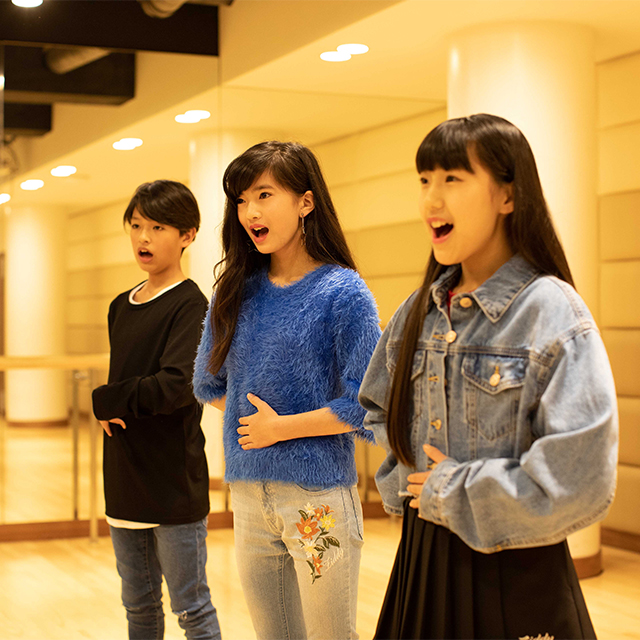Since its opening in 2001, the Avex Artist Academy has produced over 200 artists and personalities through their original and comprehensive programs. In order to learn more about the significant role it plays and the importance of a training program in the entertainment industry, we sat down with the academy’s general manager Hiroshi Kamata, creative and marketing strategy unit leader Yoichi Shigami, and Hiromu Hoshino from the academy’s new project promotional department and head of the Dance COMMUNE app.
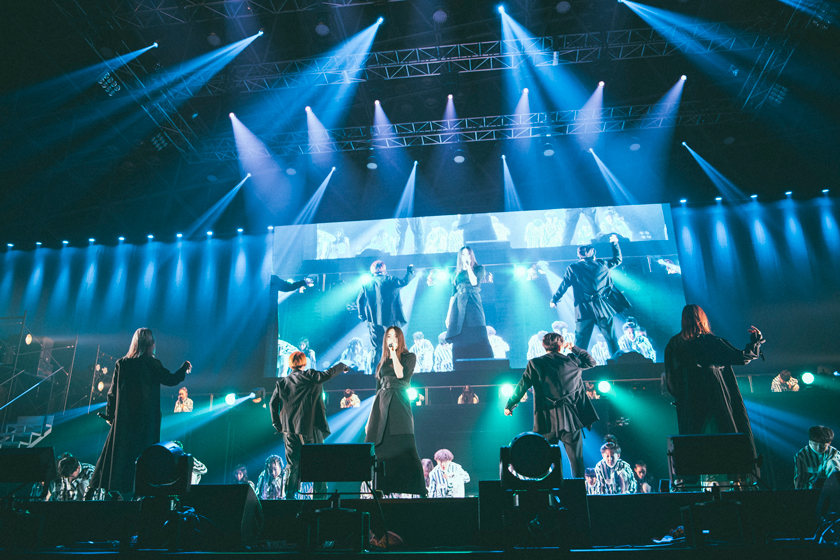
The path to debuting diverse
and talented people.
Academy strengths that
Avex takes pride in
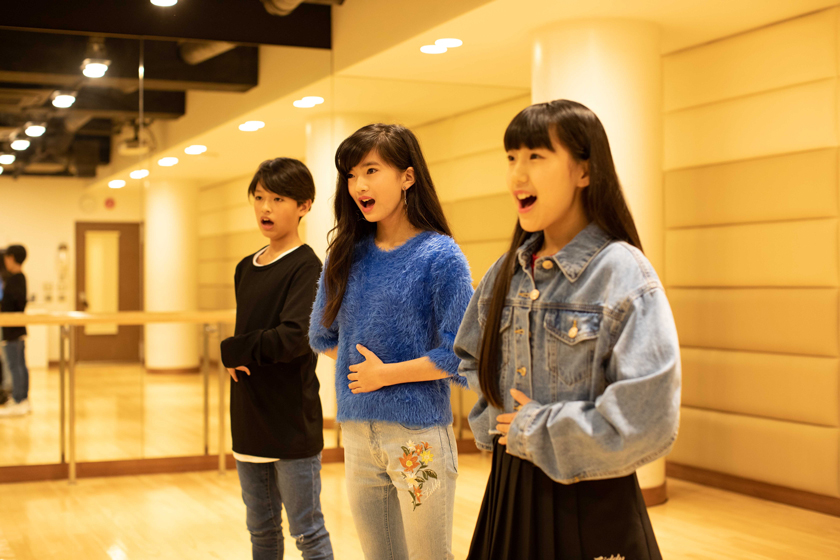
When the academy first opened its doors in 2001 there were no schools that grew talent for the entertainment industry. Shigami looks back on his time at the academy in its early years as a vocal instructor.
Shigami “We had the idea of creating a school from which we could pick out the best artists and produce their debut under the Avex label. After forming the final ideas within the company and thanks to the help of many important people, we were finally able to open the academy in 2001.”
The year 2001 also saw the record sales of Ayumi Hamasaki’s best album A BEST, which reached over 5 million albums sold. Hamasaki had also successfully finished her first large-scale tour performing at 4 dome-sized venues and topped off the year receiving the highest award at the Japan Record Awards, becoming Avex’s billboard artist and establishing a prosperous career. This success also had an influence on the academy.
Shigami “When the academy opened in 2001, Hamasaki Ayumi’s popularity was through the roof, influencing a crazy turn out of students in our first year. A lot then went on to graduate and made their debut into the industry in many different styles, including the members of AAA. It was just so rare for there to be a place that kids with dreams could go and later on actually become artists themselves.”
With roughly 20 years of contribution to the academy Shigami has been an integral part of its structure. As for Kamata, he first started working with Avex from 2004 at the dance agency Dance Master, and later joined Avex as an employee from 2008 and is now managing the academy. Let’s see what these two think the academy’s strengths are.
Shigami “This pertains to what we mentioned early, but there are many different schools out there now that get people ready for the entertainment industry. This academy is directly operated by Avex, an entertainment company, and it has established a pathway to bring people from zero to debut. This is a strength that we have spent 20 years maintaining. One more strength would be our lineup of intensely original and experienced pro instructors who stick to a finely balanced and uniformed program according to a manual and their own originality. These are what put our academy above the rest.”
Kamata “I’d say we’re different from other schools because we’re training a diverse array of talents including singers, models, actors, DJs and creators. We’ve also expanded throughout the country thanks to dance by creating a licensing-out system that lets us reach youth all over. No other company has this kind of system. Now we have Hoshino joining us from the new project promotion department and we plan on implementing technology to make our school even more multi-faceted, which will give us a third strength.”
The key to growth
is in the output.
Technology × School:
a new form of support
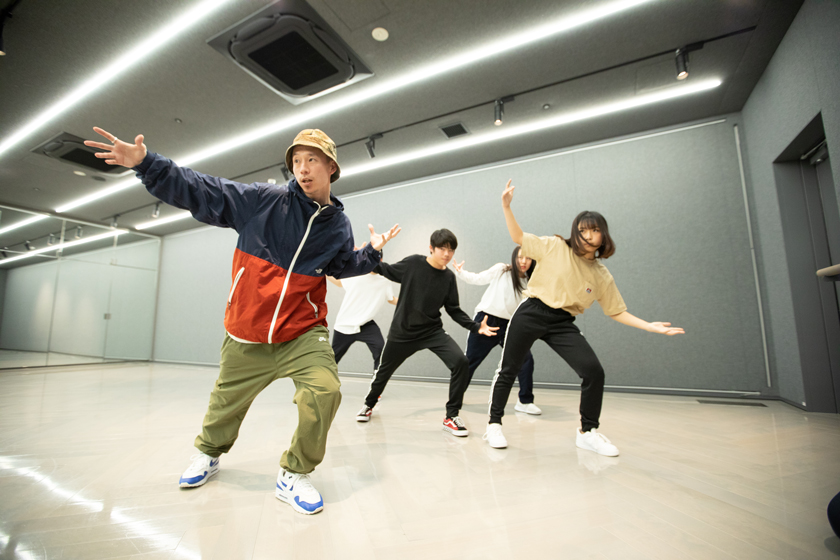
Kamata and Shigami have seen a myriad of students during their time at the Academy, and today, after all the changes in the times and environments, they have witnessed some changes amongst the students as well. Let’s see what they are.
Kamata “Back when we first opened, there weren’t any schools that were as directly linked with artists as we were, so the percentage of students entering with clear-cut visions of what they wanted to become was staggering. But now, after dance has become as popular as it is, and of course thanks to it becoming a mandatory class at [middle and high] schools, we have an un-proportionate amount of students that attend class as if they were picking up a new hobby.”
Shigami “Back in the day, we only had students that were full of nothing but passion. And it was the teacher’s that were holding the reigns. Now our students are full of knowledge and their quality in singing and dancing is amazing. It’s actually harder to stand out now since everyone is so talented.”
Kamata “Out of all of this, the next thing to take importance is building their output capacity. With social networks and YouTube and everything, it’s a lot easier to broadcast your own content and take advantage of opportunities. We’re aware that we need to produce students that can adequately put out what is put in. This is exactly what we are working hard on at the moment.”
As mentioned above, Avex’s third strength will come from its soon-to-come synergy between technology and school program, which Hoshino leads.
Hoshino “The idea came from sports. They implement data science and technology when training for competition or making important training decisions and it is evolving like crazy. I’ve felt that there are things that it could help in the entertainment industry, like people having trouble staying up to par with dance and singing ability, which happens quite often. So about two and a half years ago I took my business plan, that later became what we call Dance COMMUNE now, to Kamata and Shigami and asked about the possibilities.”
Avex realized that they could come up with a new business by implementing cutting edge technology, such as video analysis of dancing incorporating their finely assembled dance training knowhow, and turning it into content for users. Hoshino concluded that in order to construct the idea in real life, they would fair best by doing it together with the folks at the academy.
Hoshino “At conventional schools, it’s mostly been one teacher teaching several people, and there is a limit to how much feedback you can give to each individual. From our questionnaires we’ve learned that there were a lot of students that “couldn’t feel a sense of personal growth.” If you use the Dance COMMUNE app you can film your dance practice, analyze it and see how well you’re improving with actual numbers. It improves the student’s motivation. We think this will be able to help support growth in a way that we’ve never seen.”
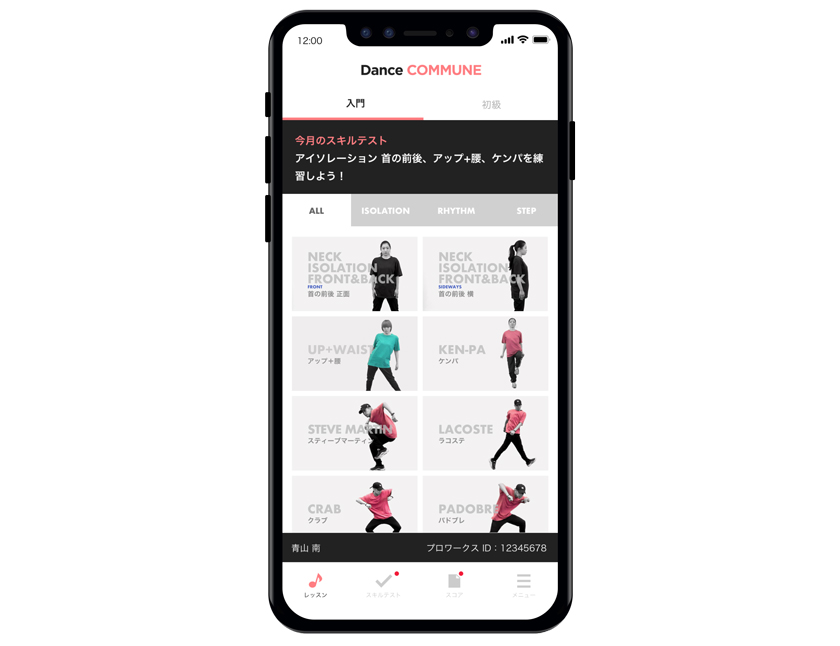



Diversifying learning by
sharing knowhow.
Future plans for the
academy that aren’t limited to reality

As technology has continued to advance rapidly, showing explosiveness in social businesses from the beginning of the millennium up until 2020 and surely beyond, the academy has stayed in the realm of reality, regarding its business endeavors.
Kamata “Just as we were feeling the weight of how much we had to change, Hoshino approached us with this idea. It was great timing and we are thankful. If we had to come up with ways to implement technology, we probably wouldn't have had the ability to drive the project from scratch.”
Hoshino “I just want to make sure there is no misunderstanding here, but analyzing dance is a very difficult task. The wind is not at your back and your sail is definitely not full. We’re still going through a lot of trial and error in improving the accuracy. Furthermore, we are still mainly focused on evaluating the skills related to basic movements and hope to come up with a system to support the array of people involved in entertainment, and creating some real added-value.”
To expand on the topic of “real” talk, Kamata says he is cooperating with everyone at the academy to paint plans for its future.
Kamata “Up until now I used to think that the real foregrounds, the physical place in which education happened held the most value. But the way in which users enjoy learning has also evolved and diversified. It is up to me to shed my old way of thinking, to stop hanging on to old ideologies and, to not lag behind. I think one key word for the coming future is “share.” We won’t be able to come up with new values by holding onto and sitting on knowhow. We are in a time where the more valuable knowhow you have the more you should share it because that will attract the most people. And it won’t happen by teachers just being conscious of that, and feeding students information as they have. We need to actually diversify methods for learning.”
Shigami “Plus, we are painfully aware that we need to work harder for artists from now on. For the very reason that we are now in a world where consumers and artists are directly connected, it is imperative that we are able to have artists choose us to partner with. If we can’t do that then there is no significance in being here. In that respect we have to create a structure that will have talented young artists say “I want to learn at Avex.” We have to make an attractive community. If we can do that, then there will be meaning in us being here for the next 10 to 20 years.”
Towards the end of the interview, Hoshino filled us in about how when he first came to Shigami and Kamata two and a half years ago with his idea, Shigami told him, “that’s what I’ve been wanting to do for 20 years now!” The academy has supported the growth in talent amongst the next generation for many years and it is now the academy that is being urged to grow. If Avex can manage to fuse together their overwhelming knowhow with a new integrated system and network using technology, we will surely see the emergence of new artists from a completely new academy.
Utilizing the web and the
“global perspective.”
Adjustments at the
academy due to Covid19
At the end of the interview, we asked about what measures were being taken to handle the effects of the novel corona virus.
Q.What preparations have you done for handling student entry and your current lessons in regards to Covid19?
Kamata “We have put together a live online lesson program, which is what every other place has done. It takes a while to test and set up the whole system, so we recorded some lessons while the classrooms were closed to the public and put them on YouTube for our students to view.”
Shigami “We closed all classes at the end of February and gave back all of our student’s tuition for that time period. We also extended the payment period for all classes after reopening a full year. For our vocal training students, we have put together 90 songs-worth of GarageBand data for at-home training which we will hand out soon. We have also made dance and vocal lessons for students to do at home and have posted 800 videos on our YouTube channel for free as of March 15th. Other things include the ability to view our Avex Vocal Master Method Compilation for free on our website and have opened payed online lessons for the public for vocalists, dancers, models, and actors.”
Hoshino “For students that were unable to attend dance lessons and couldn’t find proper places to practice after we decided to temporarily close the academy at the end of February due to cities’ requests, we made Dance COMMUNE free to use so that they could enjoy dancing at home. At first we only made it available to certain students who commuted to the Tokyo school, but then we opened it up for everyone and in the first week of March almost 1,000 students downloaded the app.”
Q.How do you communicate with your students? How have they responded to your current measures and what are your feelings or opinions after hearing student feedback and what are some future issues you hope to tackle?
Kamata “Our staff has been able to communicate with students taking the online lessons, but for students who, for personal or family related reasons, don’t have the proper environment to take them, we have continued dialogue via email and phone. Our online lessons have pretty much been received well and we think it has been, based on questionnaires, a highly satisfying temporary method while we get ready for the reopening.”
Shigami “We have questionnaires that we give to online students periodically and frequently ask for feedback about how we’re doing currently and any awareness issues we should address for when we reopen. We are also planning to have online counseling for students and their parents and care takers before and after we reopen.”
Q.What measures do you plan on taking from here on, including any structural changes?
Kamata “As for our post-reopening, we hope to operate on a so-called ‘real and hybrid’ system that utilizes all of the merits of the online world. We also feel the need to place importance on each and every student and find ways to raise their levels of satisfaction.”
Shigami “After the pandemic, we’ve felt there has been a shift, in many forms of the word, from ‘real’ to online. The ideal stance of a school that discovers and grows artists needs to change even further and implement the internet and take on a more global perspective. As for the reopening of our physical school, we see the need to have proper sanitary management and continue social distancing. But since we are in the entertainment industry and have particularities that stem from that, there will be times that we can’t address these issues perfectly. So we will have to move forward with a mixed training menu that includes online lessons, visual archives and in-person lessons with limited attendance. And for those with advanced skills, we plan to offer an online salon that features co-writing seminars by professional music producers. We want to produce artists of the future that can work with an array of other creators throughout the world to make new works of art, that can learn self-production methods and output things with an open and broad mindset.”
Hoshino “I continue to feel happier that we moved along with the development of this service and that we are able to support individual dance practice through the use of this app in such a limiting environment. We will continue to strive to support the growth of dancers all over and improve the quality and functions of our service.”

(Photo:Top left)
Avex Management Inc.
Yoichi Shigami
(Photo:Top right)
Avex Inc.
Hiromu Hoshino
(Photo:Under)
Avex Management Inc.
Hiroshi Kamata




